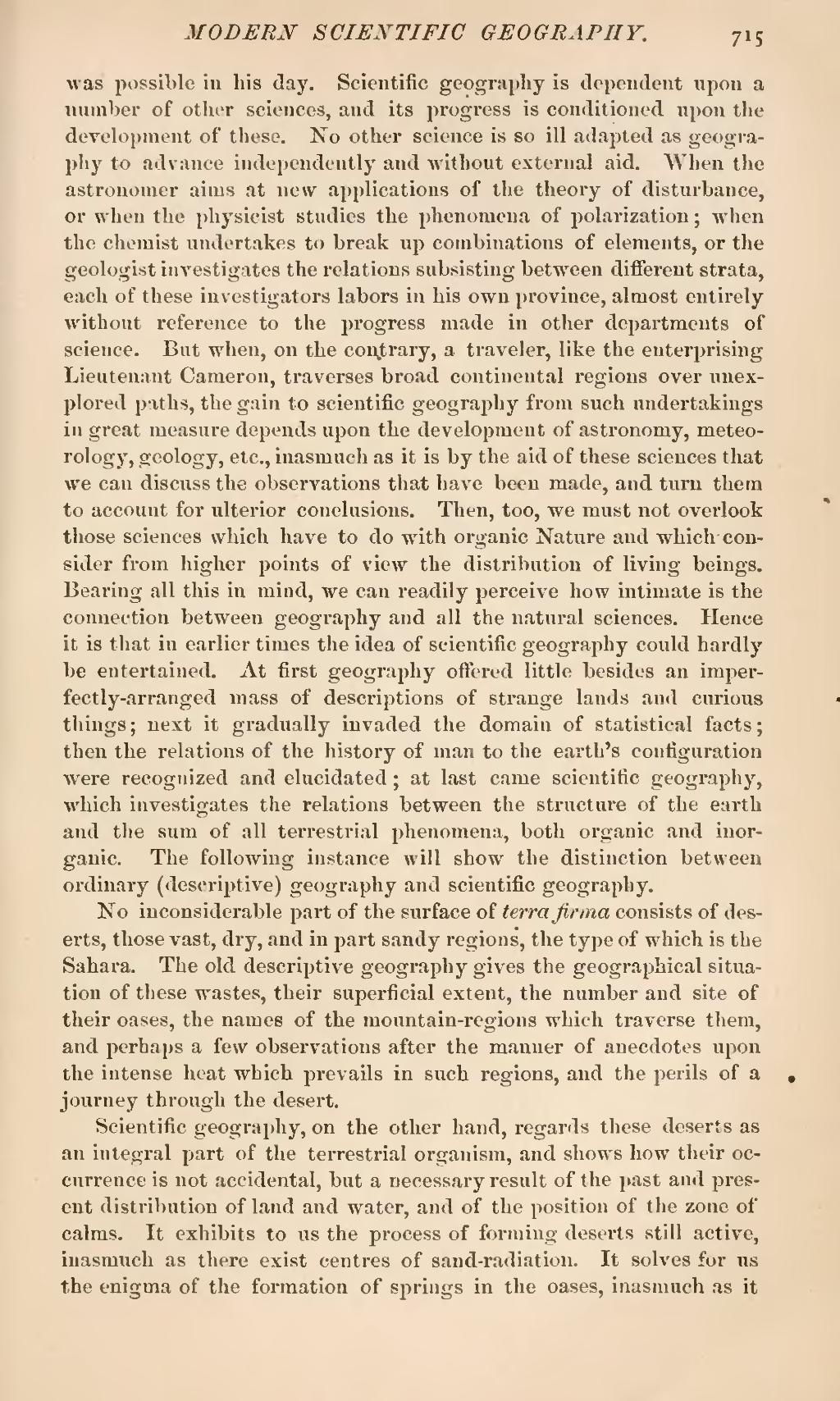was possible in his day. Scientific geography is dependent upon a number of other sciences, and its progress is conditioned upon the development of these. No other science is so ill adapted as geography to advance independently and without external aid. When the astronomer aims at new applications of the theory of disturbance, or when the physicist studies the phenomena of polarization; when the chemist undertakes to break up combinations of elements, or the geologist investigates the relations subsisting between different strata, each of these investigators labors in his own province, almost entirely without reference to the progress made in other departments of science. But when, on the contrary, a traveler, like the enterprising Lieutenant Cameron, traverses broad continental regions over unexplored paths, the gain to scientific geography from such undertakings in great measure depends upon the development of astronomy, meteorology, geology, etc., inasmuch as it is by the aid of these sciences that we can discuss the observations that have been made, and turn them to account for ulterior conclusions. Then, too, we must not overlook those sciences which have to do with organic Nature and which' consider from higher points of view the distribution of living beings. Bearing all this in mind, we can readily perceive how intimate is the connection between geography and all the natural sciences. Hence it is that in earlier times the idea of scientific geography could hardly be entertained. At first geography offered little besides an imperfectly-arranged mass of descriptions of strange lands and curious things; next it gradually invaded the domain of statistical facts; then the relations of the history of man to the earth's configuration were recognized and elucidated; at last came scientific geography, which investigates the relations between the structure of the earth and the sum of all terrestrial phenomena, both organic and inorganic. The following instance will show the distinction between ordinary (descriptive) geography and scientific geography.
No inconsiderable part of the surface of terra firma consists of deserts, those vast, dry, and in part sandy regions, the type of which is the Sahara. The old descriptive geography gives the geographical situation of these wastes, their superficial extent, the number and site of their oases, the names of the mountain-regions which traverse them, and perhaps a few observations after the manner of anecdotes upon the intense heat which prevails in such regions, and the perils of a journey through the desert.
Scientific geography, on the other hand, regards these deserts as an integral part of the terrestrial organism, and shows how their occurrence is not accidental, but a necessary result of the past and present distribution of land and water, and of the position of the zone of calms. It exhibits to us the process of forming deserts still active, inasmuch as there exist centres of sand-radiation. It solves for us the enigma of the formation of springs in the oases, inasmuch as it

